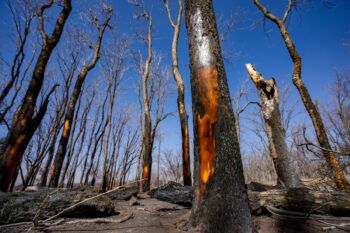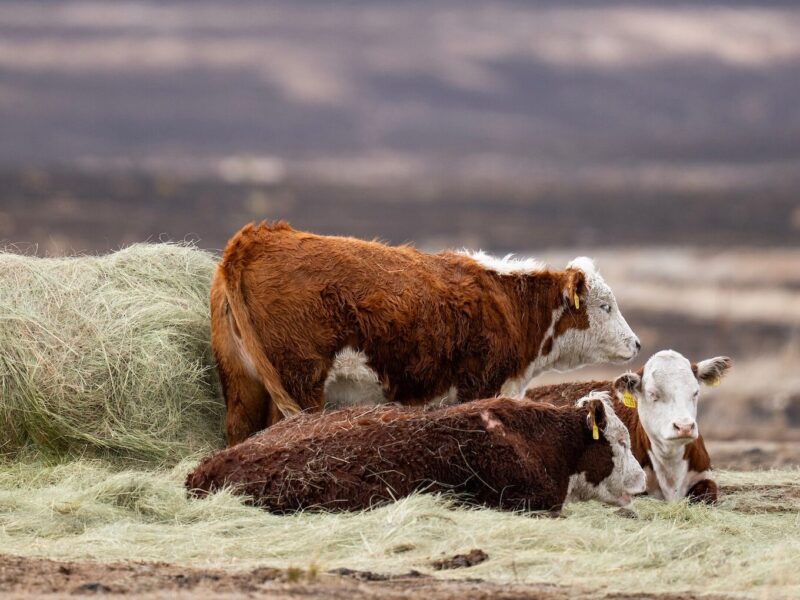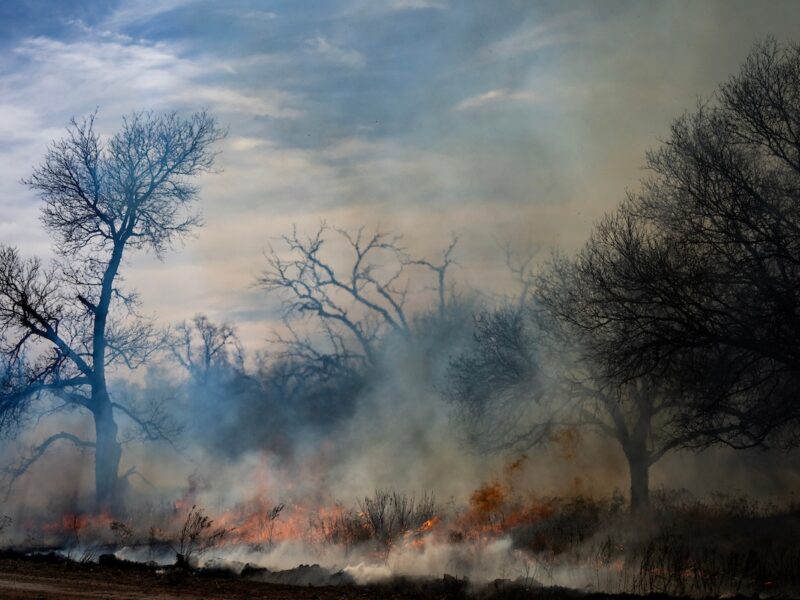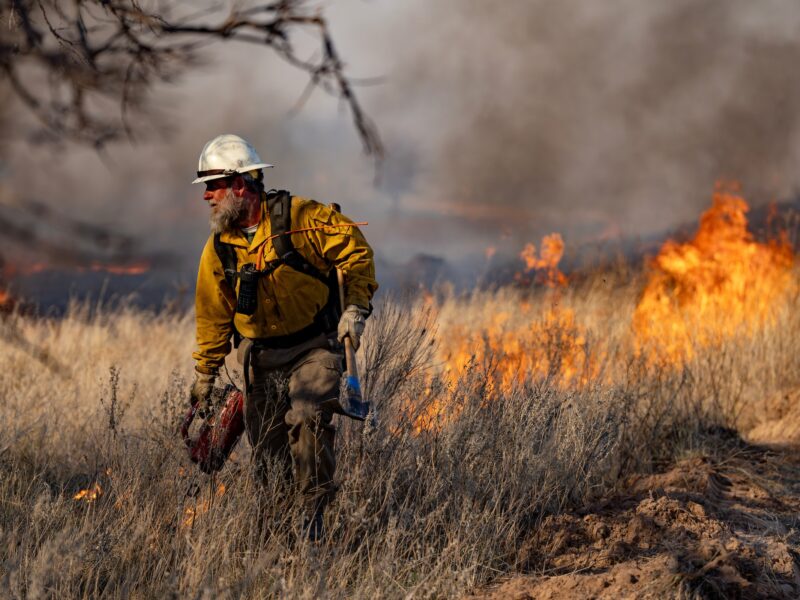Texas Wildlife Feel Impact Of State’s Largest Wildfire

Humans and domestic animals weren’t the only residents facing danger and displacement as flames roared across the Panhandle. Wildlife populations were also affected by the recent historic wildfires.
However, Texas A&M AgriLife Extension Service experts are optimistic on recovery, focusing on the long-term positive ecological response following fire that benefits wildlife.
“This is an unprecedented event with a widespread impact on wildlife habitat and food availability,” said Dr. Jacob Dykes, AgriLife Extension wildlife specialist, Corpus Christi. “When we typically discuss the positive impacts of fire on wildlife and their habitat, we focus on smaller, controlled burns.”
It is important to recognize that native wildlife and vegetation have evolved alongside fire for millennia, said Dykes, also an assistant professor in the College of Agriculture and Life Sciences Department of Rangeland, Wildlife and Fisheries Management.
Historically, these fires were caused by lightning strikes and other natural events.
“In most cases, wildlife can sense fire danger and escape,” Dykes said. “For example, deer and pronghorn antelope can smell and see a fire coming, so they know to run. Birds will fly to safe areas, and burrowing animals will retreat to underground dens.”
Among wildlife expected to be most affected were white-tailed deer, raccoons or other smaller mammals who are older or less mobile due to an illness or extenuating circumstance.
Despite the intensity of the recent wildfires, Dykes said it is important to note they occurred prior to the nesting season of ground nesting birds, avoiding widespread mortalities.
Additionally, the 2024 fawning season of ungulates, such as deer and pronghorn antelope, has not yet started. While new fawns are vulnerable, the fawns born last year are highly mobile, increasing their chances of survival.
Wildlife Management Area Sees Fire’s Impact, Anticipates Recovery
Located along the Canadian River, the Texas Parks and Wildlife Department’s Gene Howe Wildlife Management Area (WMA), is comprised of midgrass rangeland and mixed cottonwood and tallgrass bottomland ecosystems.
Chip Ruthven, Texas Parks and Wildlife Department project leader, Panhandle WMAs, said the Gene Howe WMA is 5,394 acres, and estimated over 5,100 of those acres burned during the wildfire.
Despite the considerable fire footprint, Ruthven said he and others have encountered a promising number of surviving wildlife on the property including deer, turkey, quail and a variety of songbirds.
He attributes this to pockets of unburned rangeland scattered throughout the burn area that provided a safe refuge.
“Cover for ground nesting birds such as quail and turkey may be limited this spring but given adequate rainfall, it should improve by early to midsummer,” Ruthven said.
Ruthven said biologists will have to wait until trees leaf out later this spring to assess the fire’s impact on the property’s riparian zones adjacent to the river. He and other biologists anticipate the rangeland and ecosystem response will be similar to recovery following the East Amarillo Complex fire in 2006.
Before the Smokehouse Creek Fire, the East Amarillo Complex fire was the largest wildfire in Texas history, burning more than 900,000 acres.
“Like the mythological phoenix, we anticipate the rangelands and wildlife of the Panhandle will rise from the ashes and flourish like it did following the fire in 2006,” Ruthven said.
Wildfire Timing Holds Promise For Ecosystem Response
With the wildfires taking place during the dormant season, before green vegetation growth, it was the dry, brittle grasses that burned quickly and intensely, Dykes said.
In terms of vegetation recovery this spring, burns can essentially be seen as a fertilization event.
“Fire rapidly breaks down the nutrients in vegetation and delivers them to the soil,” Dykes said. “If the area has sufficient precipitation afterward, there will be a great response from grasses and herbaceous flowering plants sooner rather than later.”
This resprouting vegetation will contribute to species diversity, leading to a variety of wildlife cover on the landscape. Additionally, this new vegetation will provide nutrient-dense forage and browse for species ranging from insects to large mammals.
“Research conducted in Oklahoma tallgrass prairie has shown the crude protein content in forage following a fire is up to four times greater compared to forage in unburned areas,” said Dr. Morgan Treadwell, AgriLife Extension range specialist, San Angelo. “This new growth will provide valuable nutrition for both livestock and wildlife.”
Experts Urge Patience With Wildlife, Landscape Recovery
As the past weeks have shown, Texans are more than willing to come to the aid of those impacted by natural disasters. But while supplemental forage and feed may benefit livestock, experts do not recommend the same for wildlife.
“I understand this is a difficult situation, but I don’t recommend feeding wildlife,” Dykes said. “There tends to be more negative impacts than positive, such as the spread of disease among stressed populations.”
Dykes said this is especially true of corn, which attracts wildlife but provides little nutritional value.
Aside from food, water availability is an important resource, which can still be accessed through ponds and naturally occurring waterways.
“I think as long as the region can make it through this short and very difficult period with adequate precipitation, we will see the landscape and its wildlife rebound in a beautiful way,” Dykes said.
This article by Sarah Fuller originally appeared on AgriLife Today.





